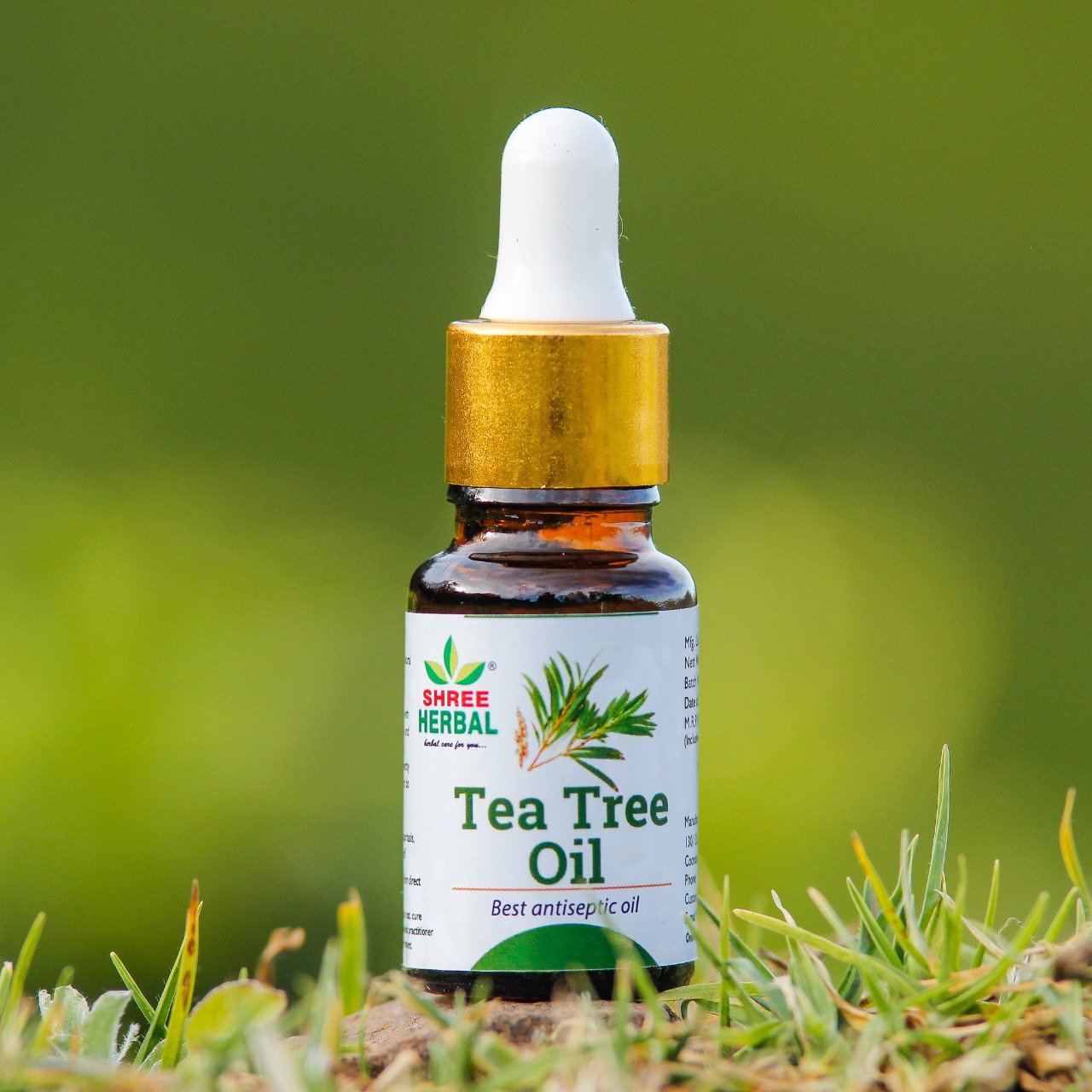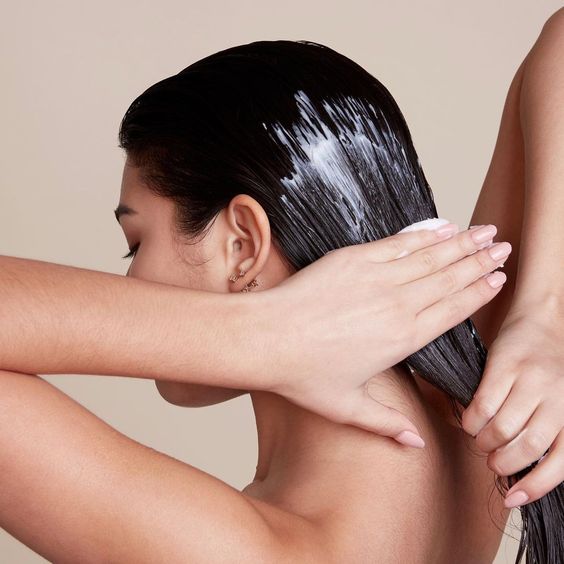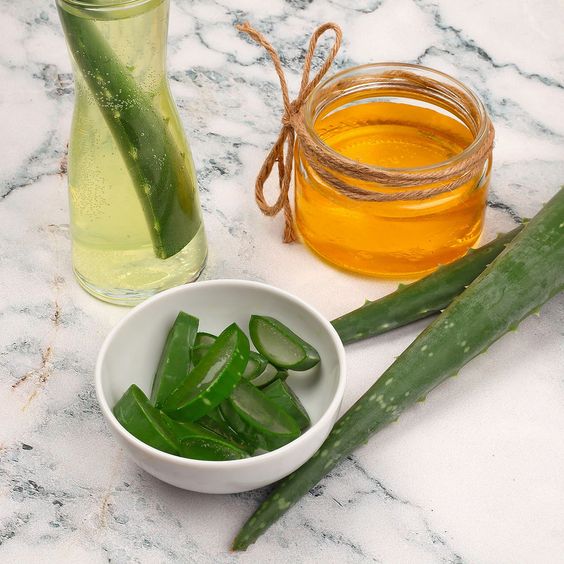Are you in search of a natural herbal oil that promotes fast hair growth? Curious about how to use it effectively? In this article, we introduce you to a fantastic solution: tea tree oil. Let’s explore the diverse benefits that tea tree oil offers for hair growth and maintaining beautiful, thick locks. From soothing the scalp to revitalizing hair follicles, we’ll guide you on how tea tree oil can transform your hair, accompanying you on the journey to achieving the hair of your dreams!

WHAT IS TEA TREE OIL?
Tea tree oil, also known as melaleuca oil, is an essential oil extracted from the leaves of the Melaleuca alternifolia tree, native to Australia. It’s been used for centuries by Indigenous Australians for its medicinal properties, and in recent years has gained popularity worldwide for its diverse range of applications..
It possesses natural antibacterial, antifungal, and antiviral qualities, making it a common ingredient in skincare and hair care products. Tea tree oil is renowned for its ability to treat various skin conditions, such as acne, dandruff, and fungal infections, due to its antimicrobial efficacy. Additionally, it is used in aromatherapy for its refreshing and invigorating scent. While generally considered safe for topical use, it is important to dilute tea tree oil before applying it to the skin and to perform a patch test to avoid potential allergic reactions.
THE BENEFITS OF USING TEA TREE OIL FOR HAIR
Tea tree oil is recognized for its ability to enhance hair health through various mechanisms. Below are some ways in which tea tree oil positively impacts the health of the hair.
PROMOTES HAIR HEALTH
Achieving thick, luscious hair is a common desire, and tea tree oil might be the secret to turning this dream into reality. With its remarkable benefits for a healthy scalp and hair, tea tree oil has the potential to deliver voluminous shine and contribute to the luxurious hair you’ve always wished for. Moreover, its properties can help prevent hair loss, encourage healthy hair growth, and contribute to the overall luster for shiny, radiant hair.
BOOSTS OVERALL SCALP HEALTH
Tea tree oil works wonders in nourishing and balancing the scalp, soothing irritation, reducing inflammation, and maintaining a healthy pH level. This fosters stronger hair follicles and a revitalized scalp, creating an optimal environment for overall hair health and growth. Including tea tree oil in your hair care routine is a simple and effective way to boost scalp well-being.
COMBATS OILY HAIR
The constant struggle with oily hair can be exhausting, especially when frequent washing risks stripping away natural oils. Enter tea tree oil, the ultimate rescue remedy! With its balancing properties, tea tree oil helps regulate oil production, providing a solution to the challenges of managing oily hair without compromising its natural health and luster.
BALANCES THE SCALP’S NATURAL OIL PRODUCTION
Tea tree oil plays a crucial role in preserving the balance of scalp oils. Its unique properties regulate oil production, striking the perfect equilibrium for hair that is nourished and healthy without the burden of excess greasiness. Enjoy the benefits of a well-maintained scalp with tea tree oil, ensuring your hair stays beautifully balanced and vibrant.
FIGHTING DANDRUFF
The telltale signs of an itchy, flaky scalp and white flakes on shoulders often point to the common issue of dandruff. Wondering how to address this nuisance? Enter tea tree oil, a natural remedy with potent antifungal properties. By combatting the underlying causes of dandruff, tea tree oil provides a soothing solution, helping to restore balance to the scalp and eliminate those persistent flakes, leaving your hair and shoulders free from the discomfort of dandruff.
ENHANCES HAIR SHINE
Consistent use of tea tree oil can yield exceptionally glossy and abundant hair. By nourishing the hair follicles, the oil promotes the development of stronger and shinier locks.
SOOTHES ITCHY AND IRRITATED SCALP
Dealing with an itchy and irritated scalp can be quite distressing. The soothing and calming effects of tea tree oil, thanks to its anti-inflammatory properties, can work wonders to provide the much-needed relief from this discomfort.
HOW TO USE TEA TREE OIL FOR HAIR GROWTH

To safely and effectively benefit from tea tree oil for hair growth, avoid direct application due to its potent nature, which may cause irritation. Instead, mix one to two drops of tea tree oil with twelve drops of a carrier oil like olive, jojoba, or coconut oil for optimal hair nourishment. Before making tea tree oil a regular part of your routine, conduct a patch test on a small skin area using a diluted form. Check for adverse reactions such as redness, itching, or rash within the next 12 to 24 hours. If any of these symptoms occur, refrain from using the oil to ensure a safe experience. While tea tree oil is valuable for improving scalp health and promoting hair growth, proper usage is crucial to prevent irritation and maximize benefits. The following guidelines outline how to use tea tree oil for optimal results in enhancing your hair and scalp health.
For Dandruff
Shampoo Application
- Choose a shampoo containing 5 percent tea tree oil.
- Wet your hair and scalp thoroughly.
- Apply the tea tree oil shampoo to your scalp
Massage and Lather
- Gently massage the shampoo into your scalp, focusing on areas with dandruff.
- Ensure a good lather and leave it on for at least 3 minutes. This allows the tea tree oil to penetrate and address the dandruff.
Rinse
- Rinse your hair thoroughly with water.
- Repeat this process daily for four weeks to see improvements in dandruff control.
For Healthy Hair
Scalp Massage Ritual
- Embrace the Scalp Sanctuary: Close your eyes and envision your scalp as a fertile field, ready to nourish new growth. Gently massage the diluted tea tree oil mixture onto your scalp for 5-10 minutes. Let your fingertips waltz across the surface, releasing tension and stimulating blood flow.
- Feel the Flow: Imagine the oil seeping into your follicles, like rain awakening dormant seeds. This invigorating massage awakens your scalp, creating a welcoming environment for healthy hair growth.
Leave-in or Rinse-out Symphony
- The Choice is Yours: Do you prefer a lingering infusion or a fresh start? You can leave the diluted oil on your scalp for 30 minutes to an hour, allowing its goodness to soak in. For a lighter touch, simply rinse it out with a gentle shampoo.
- A Touch of Synergy: Alternatively, blend a few drops of the diluted mixture into your regular shampoo or conditioner. This infuses your existing hair care routine with a touch of tea tree’s magic.
Monitoring and Adjustments
- Scalp Sensitivity: Keep an eye on your scalp’s reaction. If you notice any irritation or discomfort, consider adjusting the concentration by diluting the mixture further.
- By following these detailed steps, you can create and use a properly diluted tea tree oil mixture for promoting healthy hair without causing any adverse effects.
Risks and Warnings Associated with Tea Tree Oil Use
POTENTIAL SIDE EFFECTS
For some, overuse or improper tea tree oil application may lead to skin inflammation, itching,dryness and allergic reactions. If you observe any of these adverse effects, cease its usage promptly.
PRECAUTIONS AND TIPS
Prior to application on your hair or scalp, always dilute tea tree oil with a carrier oil. Refrain from swallowing or ingesting the oil, as it can lead to serious side effects such as confusion, lack of muscle control, or even coma in severe cases. Additionally, be mindful that tea tree oil may trigger allergies, especially for individuals allergic to Balsam of Peru, benzoin, colophony (pine tree) tinctures, eucalyptol, or plants from the Myrtle family.
Conclusion
We believe that this article has provided a comprehensive guide to the remarkable benefits of tea tree oil for hair. However, exercise caution in its usage, adhere to preventive measures, and pay attention to any discomfort signals your body may convey. Always consult with a dermatologist or trichologist if you have any concerns related to the health of your hair.
FAQs
- Can You Apply Tea Tree Oil Directly To Your Hair?
It is not recommended to apply tea tree oil directly to your hair without dilution. Tea tree oil is highly concentrated and may cause skin irritation, dryness, or other adverse reactions when used undiluted.
- Is Tea Tree Oil Good For Hair Loss?
Yes, tea tree oil is not proven to be a direct remedy for hair loss. While it may contribute to a healthy scalp, addressing the underlying causes of hair loss requires a comprehensive approach. How Often Can I Use Tea Oil On My Hair?
Up to three times a week is generally considered safe for most people. Talk to a doctor before using tea tree oil if you have severe hair fall or other scalp-related problems.
- How Long Can You Leave Tea Tree Oil In Your Hair?
It depends on how you’re using it. If it’s mixed with carrier oil, you can leave it overnight. However, when using tea tree oil by itself as a scalp treatment, it is not advisable to leave it on for more than an hour.




